Demantoid Disclosure
The ins and outs of reporting treatment and locality
Note: Please bear in mind that the inclusions displayed here may at some point lead to judgments being made about them, but at present gemological laboratories and the gemstone industry are uncertain as to how to analyze inclusion characteristics.
Pala International has been one of the main suppliers for demantoid garnets from Russia in the U.S. since 1995—not only buying parcels of rough from various mines but also funding a hands-on project at the Klodovka Mine with Russian partner Nikolai Kouznetsov.
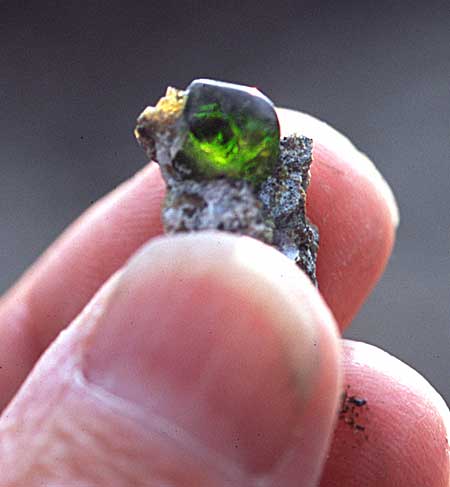 |
| Ural pearl in matrix, freshly unearthed. Heat-treated? Probably… (Photo: William Larson) |
In an effort to educate as well as supply the market with demantoids, we have maintained due diligence in identifying and disclosing the true nature of the material. As different parcels of rough and cut stones were purchased out of Russia and collected at the Klodovka mine, efforts were made to keep different parcels separate. Some stones were determined to be untouched by man and marked as untreated. Later on, certain stones were determined to have undergone a low-temperature heating process, which is completely stable.
 |
| Unidentified crystal at the center of the horsetail nebula. From a 2.81-carat round, 8.0 x 5.4 mm. (Photos: Jason Stephenson) |
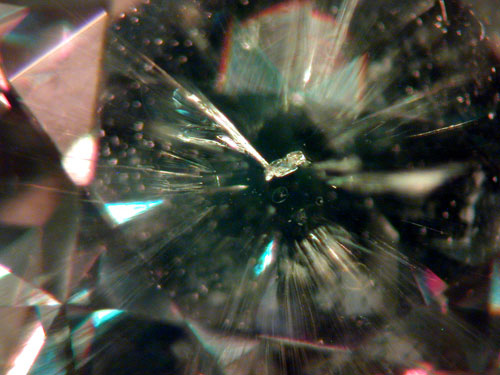 |
Some general trends were found on demantoid material from three main mining areas.
- The Klodovka mine produced saturated greens with medium tones right out of the ground and most were believed to be unheated
- The Karkodino mine produced highly saturated greens with an extremely dark tone. This material was heated to lighten the tone and many came out pure vivid green
- The Babrovka mine produced material that was less saturated, but had the high dispersion levels associated with fine demantoids
These statements are very general and only speak for the large habit of material from each mining area.
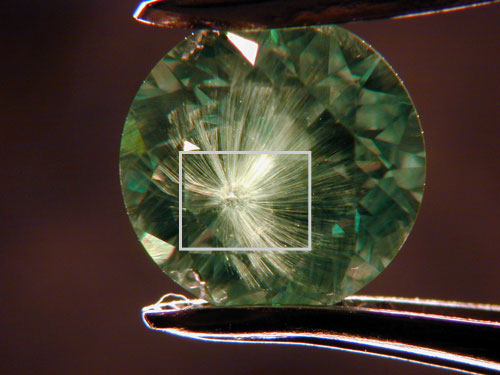 |
| Classic radiating horsetail inclusion with distinct core. From a 2.25-carat round, 7.2 x 5.0 mm. (Photos: Jason Stephenson) |
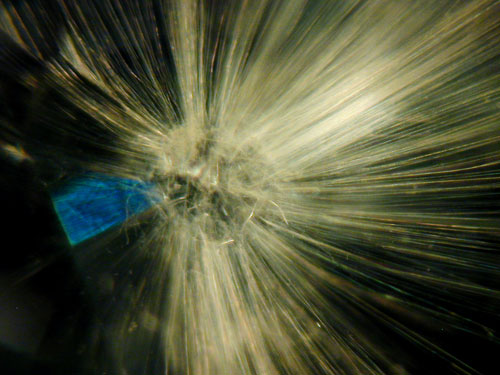 |
Laboratory Approaches Towards Disclosure
Along with our investigations into this material the major laboratories have been cataloging their findings as well. In the beginning the labs would not make the heat-or-no-heat call because it was undetectable. As their databases grew and internal characteristics began revealing more clues, new assumptions were made. Below are some of the current approaches the major laboratories are taking.
- Gemological Institute of America (GIA) – Will not identify whether a demantoid garnet has been heat treated; will not determine origin on demantoid garnets
- American Gem Trade Association (AGTA) disclosure – Enhancements: Indications of heating. Gemstones of this type may be heated to improve their appearance. This treatment is not detectable using current technologies; such heating is generally stable under normal wearing conditions. AGTA is not giving country of origin
- American Gemological Laboratories (AGL) disclosure – AGL will make the heating call, and give country of origin
- “It is in the opinion of the Laboratory, based on the weight of evidence, that the origin of this material would be classified as Russian. It is the opinion of the Laboratory that this material has been subjected to a low to moderate heat enhancement process to produce a permanent and stable color.”
- Gübelin Gemmological Laboratories – Will denote the country of origin but not whether the material has been subjected to heat
- SSEF Swiss Gemmological Institute – Will state country of origin and whether there are indications of heat treatment
The labs that do report country of origin are not able to pinpoint specific mines at this time.
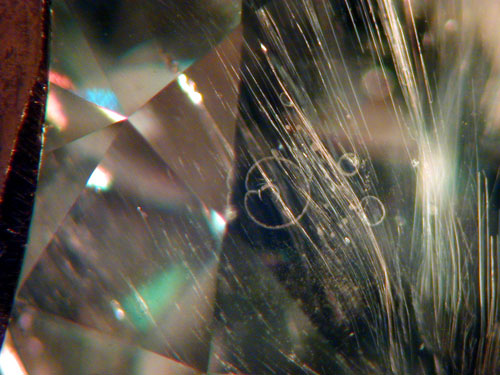 |
| Unidentified halo inclusions of varying sizes along chrysotile needles. Halos similar to these are found in varying sizes within many demantoids. (Photo: Jason Stephenson) |
Mother Nature’s Heat Treatment
The big question is: Can you distinguish if the stone has been heated while still underground versus above ground by man? The objective answer is No, but there are many subjective opinions amongst members of the gem trade community. It is known that all demantoids have gained their existence and color by natural heating processes within the ground, associated with regional metamorphism.
As new developments are made by the laboratories we will update and supplement the findings on this page. (Published July 16, 2009)
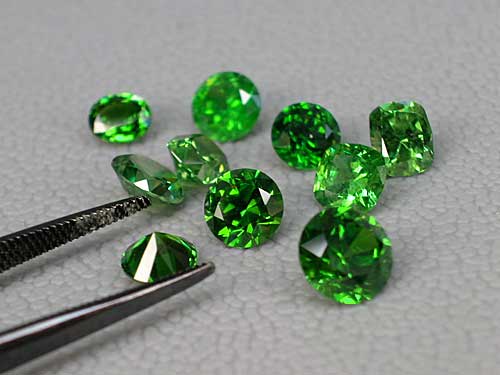 |
| This suite of 0.75–2.0-carat demantoid garnets shows the typical range of colors possible. The ideal body color would be the center stone, which is not too light or dark, but the lighter tones show off demantoid’s fire to better effect. Photo: Wimon Manorotkul; Gems: Pala International |